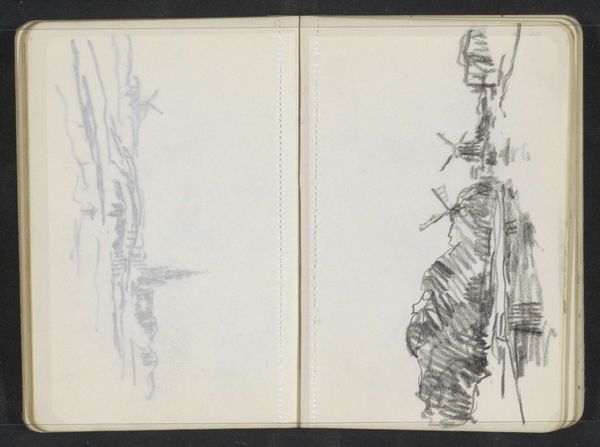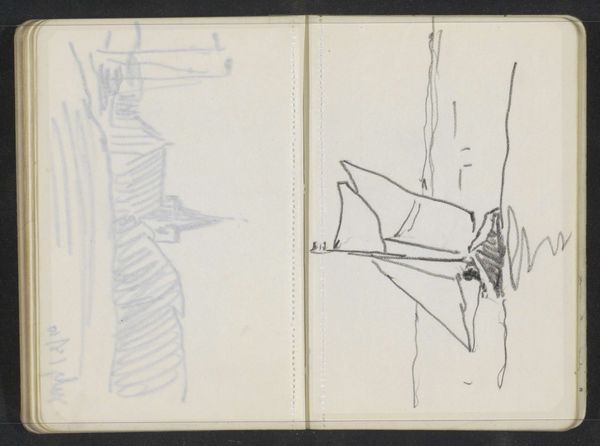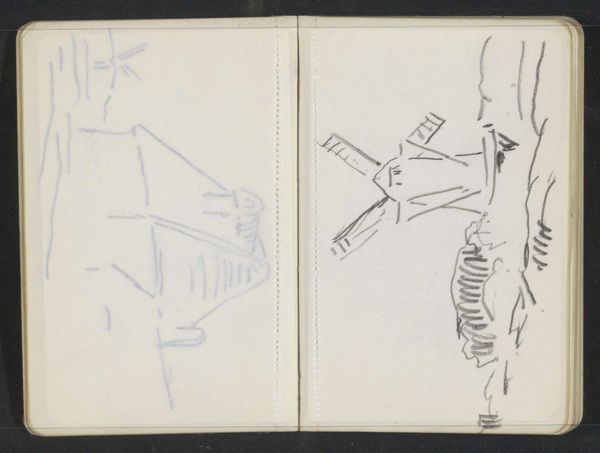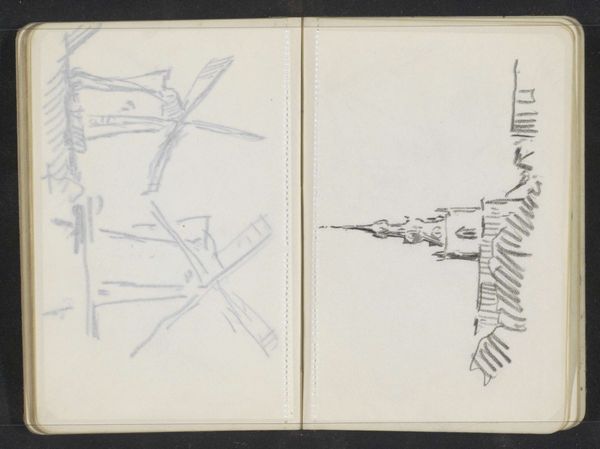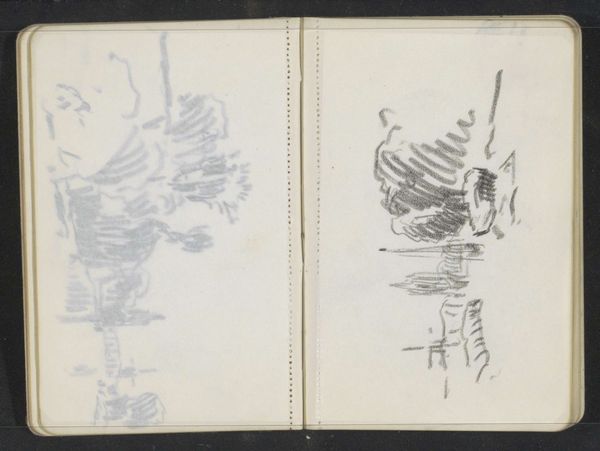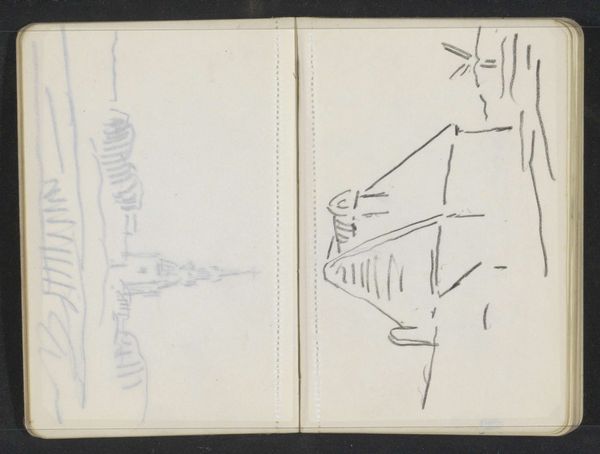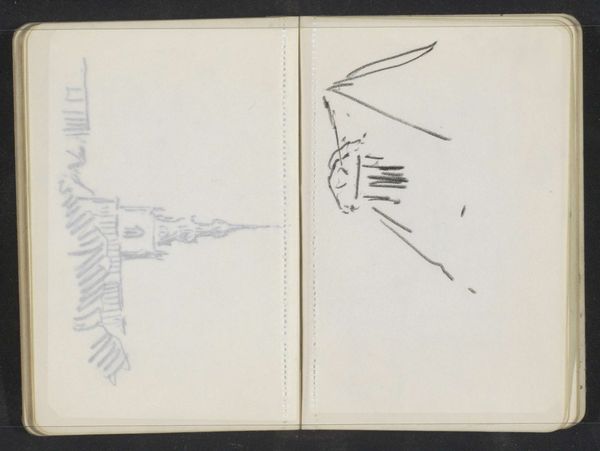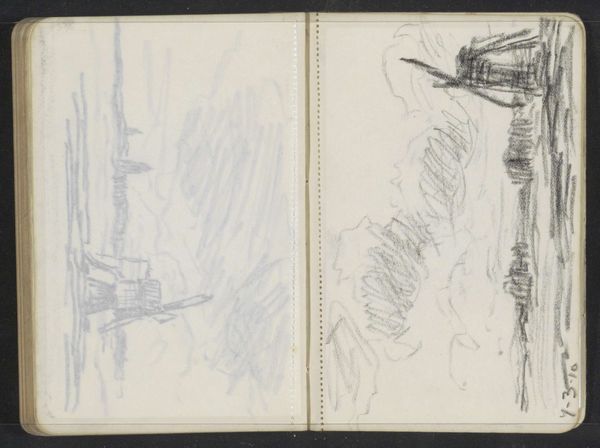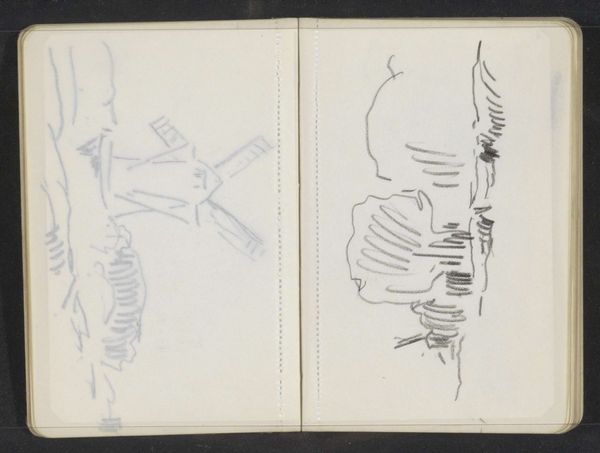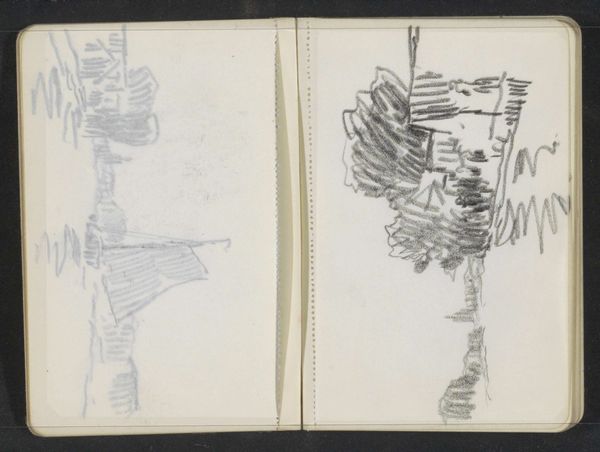
drawing, pencil
#
drawing
#
pen sketch
#
landscape
#
form
#
geometric
#
pencil
Copyright: Rijks Museum: Open Domain
Curator: This double-page drawing, aptly named "Twee molens aan een waterkant" or "Two Mills by a Waterfront" by Alexander Shilling, created around the 1900s, seems to capture a fleeting impression, sketched using pencil and what appears to be pen too. What are your initial thoughts? Editor: It's so ephemeral! The delicate lines almost fade into the paper, giving it a dreamlike quality. The mill on the right feels a bit more solid than the blurry mill on the left page. Are we really seeing two mills here, or two depictions of the same one at slightly different angles? Curator: Possibly both. Considering Shilling’s process, one might delve into the sketchbook as a site of labor and experimentation. What does it mean to produce a quick sketch like this versus a finished, more formal work? What kind of labor went into the quick pen strokes we see versus more polished ink or paint renderings that could have been a more salable rendering. Editor: From an iconographic view, water has historically symbolized purification, but also chaos. Coupled with windmills—a more modern symbol of industry, of harnessing natural forces—I see a tension between these concepts. The light versus heavy stroke between the windmills may further emphasize these elements: an untamed, primal force against industry’s rational influence. It reads as a bit unresolved. Curator: The medium itself–pencil and pen–suggests a preliminary stage, an exploration of form before a commitment to something grander. What implications arise in understanding the accessibility of such tools to the working class in Europe in the early 1900’s, especially in comparison to the oil paints the well-to-do enjoyed as a pastime? Editor: It makes you wonder if the incomplete quality speaks to the nature of the artistic process itself – an ongoing cycle of creation, destruction, and re-interpretation. Like water it shifts into other shapes or phases. A windmill of the mind continuously churning, refining raw thought into a structured vision. Curator: The material accessibility undoubtedly democratized art-making to a certain extent. These humble materials served to allow Shilling the opportunity to experiment on and hone skills. Perhaps, however, in his circumstances, accessibility simply became another obstacle in turning it into more concrete work to become employed, but that's for later research! Editor: I think so too. It's remarkable how much symbolism can be unearthed even from something so seemingly simple, as a means to help others investigate an entire worldview. Curator: Exactly, by examining Shilling’s marks, materials, tools, and socio-economic landscape, one can gain further knowledge of what the production and dissemination of these images reflect!
Comments
No comments
Be the first to comment and join the conversation on the ultimate creative platform.


